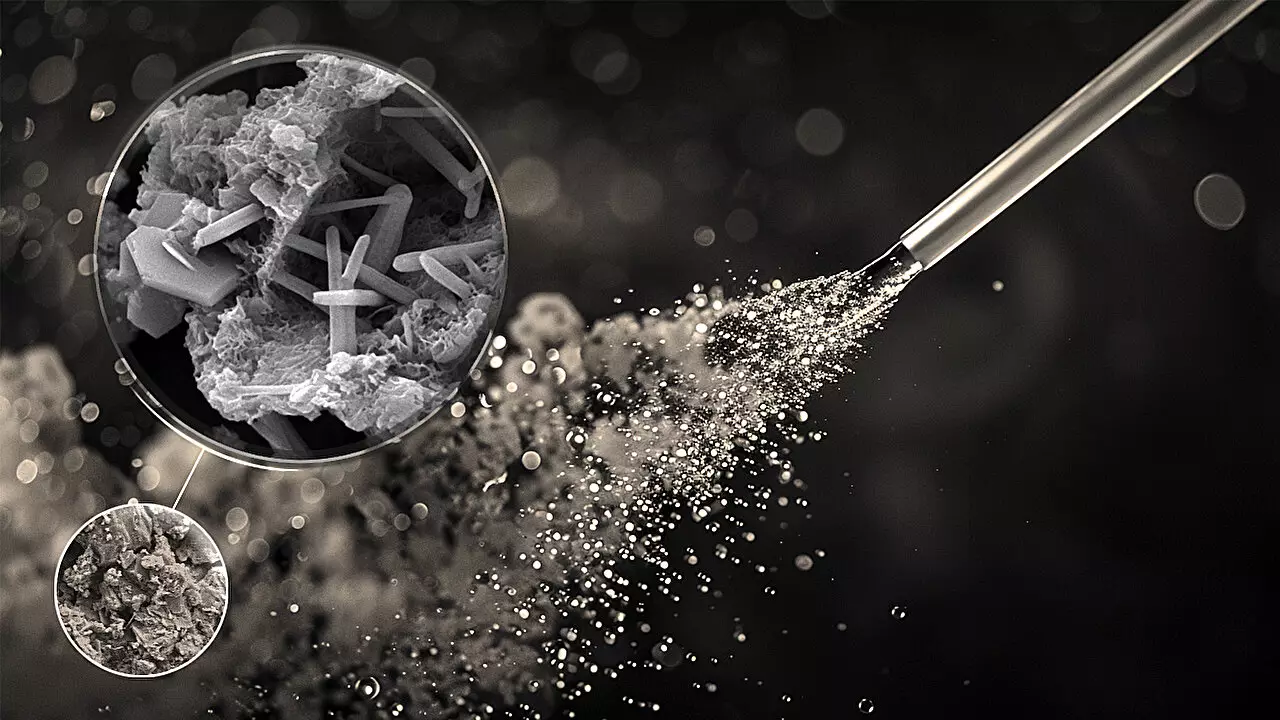Concrete is a cornerstone of modern construction, essential for building infrastructure across the globe. This durable material is second only to water in terms of consumption. However, its creation has a significant environmental cost: the cement and concrete industries contribute roughly 8% of global greenhouse gas emissions. A recent innovation by a team from Northwestern University, led by engineer Alessandro Rotta Loria, introduces a groundbreaking method using carbonated water to enhance concrete production while simultaneously addressing the pressing issue of carbon dioxide (CO2) emissions.
The novel approach entails integrating carbonated solutions during the concrete production process, efficiently sequestering CO2 that would otherwise be released into the atmosphere. This technique has demonstrated an impressive CO2 capture rate of up to 45%, showcasing the potential for concrete not only to minimize its carbon footprint but also to act as a carbon sink in the future. This advance represents a significant leap toward transforming the concrete industry’s impact on climate change.
Innovative Engineering Meets Sustainable Practices
The technique adopted by Rotta Loria and his research team is elegant in its simplicity. By injecting CO2 into a carbonated water mixture—rather than directly mixing it with traditional concrete ingredients—the researchers have optimized the carbonation process. This adjustment leads to a more efficient reaction that produces solid calcium carbonate crystals within the concrete, enhancing its strength and durability.
What sets this method apart from previous attempts at CO2 sequestration in concrete is its efficiency and the preservation of concrete strength. Traditionally, methods such as injecting CO2 into hardened concrete or during the mixing process faced challenges, including low CO2 capture efficiency and compromises in the structural integrity of the resulting material. In contrast, the Northwestern team’s research maintains and potentially increases concrete’s strength, expanding its usability without compromising construction standards.
A Dual Impact: Concrete Strength and CO2 Sequestration
One of the most significant findings from the study is that carbonating concrete during its production may lead to superior durability compared to conventional methods. Traditionally, the chemical processes involved in carbonation weakened the concrete, limiting its applications. However, this new approach enables the creation of concrete with a significant concentration of calcium carbonate while maintaining its integrity.
This breakthrough has major implications not only for construction but also for climate mitigation efforts. By turning concrete into a vehicle for carbon storage, the concrete and cement industries could potentially reverse some of their emissions impact, making strides toward sustainability and profitability in an increasingly eco-conscious marketplace.
Rotta Loria’s research identifies that while methods for CO2 uptake in cement-based materials are well-established, there is still immense scope for optimizing these processes. Understanding the underlying mechanisms can lead to innovative materials processing techniques that enhance CO2 sequestration efficiency further.
Collaborative Efforts for a Greener Future
This research was a partnership between Northwestern University and CEMEX, a global leader in building materials committed to sustainable practices. The collaboration highlights a trend in the industry; leading firms are increasingly investing in innovative technologies that reduce environmental impact. By embracing these advancements, companies can position themselves as champions of sustainability while satisfying regulations and market demands for greener products.
The implications of this study extend beyond just the technical aspects of concrete production; they represent a paradigm shift in how industries approach climate change. The construction sector must adapt and innovate to survive in a world where sustainability is becoming non-negotiable.
The Road Ahead: Implementation and Potential
Looking forward, the focus will be on the practical aspects of implementing this new carbonated approach in industry settings. With relatively uncomplicated technological requirements, scaling up this process for widespread use should be feasible. Companies in the concrete industry can potentially adopt these methods without significant hurdles, allowing for swifter transitions to lower carbon emissions.
As global stakeholders continue to grapple with climate change, initiatives such as this offer hope. The dual benefit of creating a stronger concrete product while reducing atmospheric CO2 can lead to a more sustainable future. It is crucial for engineers, policymakers, and industry leaders to work together and leverage such breakthroughs to foster an environment that prioritizes sustainability without sacrificing quality or performance.
The work done at Northwestern University serves as a reminder that innovation stems from the intersection of knowledge, creativity, and responsibility. As we chart a course toward a more sustainable future, integrating eco-friendly practices into core processes—like concrete manufacturing—could prove to be a cornerstone of our collective efforts in combating climate change.

